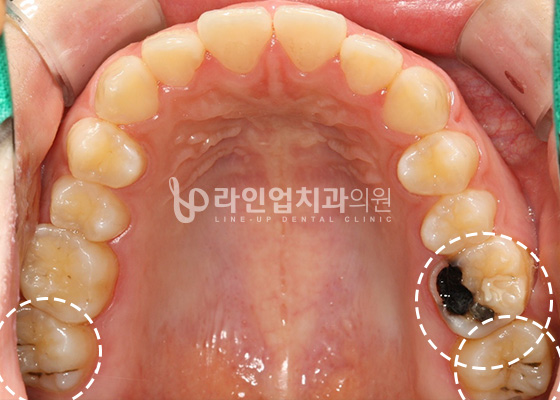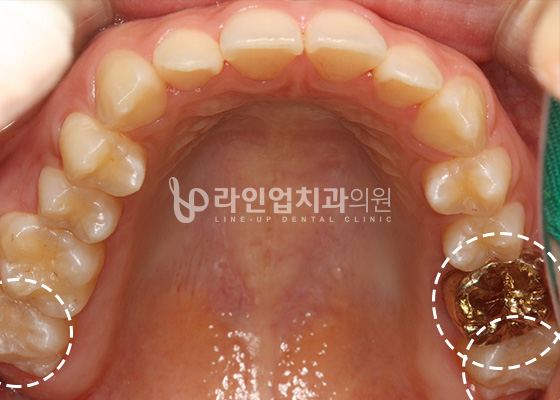Preserve healthy teeth to the maximum
Delete correct part of cavity
Cavity Treatment
LINE-UP DENTAL CLINIC
Rotting teeth are the signs of the disease, dental carries which is seriously affected by bacteria.
The progress of a cavity
Only the outermost part of the tooth, the enamel is rotten, and during this time, there is no pain and no need for treatment, but regular observation and good oral care are necessary.
The tooth decay is faster and prone to be dented, and contact with cold air or water can cause pain.
It hurts so much that you can't sleep, and when you drink cold water, it is even more painful.
The nerves are all rotted, the roots of your teeth are inflamed, and even you can't feel pain.
- When eating something cold, teeth smart.
- When eating sweets like chocolate, teeth smart or hurt.
- When chewing some food, teeth smart or feel sick.
- The teeth look black.
Treatment method
It is materials for treatments and refers to the treatment to fill the areas of cavity.
Advantage- Same color as teeth and is aesthetically superior
- Small amount of removed teeth
- Lower cost than other materials
- Shorter counsultation time
- Treat and prevent cavities at the same time
- Tooth discoloration
- Resins can be worn or broken if bite hard
It is a treatment that after removing tooth decay and make shape of original. It proceeds when it can not be treated simply like a Resin.
Advantage- Aesthetically superior
- Stronger than a Resin
- Less powerful than gold and can be broken
- More complicated than the Resin treatment
Gold is a commonly used material for molar cavities, with the least side effects.
Advantage- Strong enough to resemble the strength of a tooth
- Best material physically and biologically
- Not aesthetically good
- Larger amount of removed teeth than Resin treatment
Root canal therapy is a dental treatment that removes nerves and fills them with biocompatible material if the nerve vascular tissue in gum is exposed or get an infection by cavity or other damage.
- Serious cavity (Level 3)
- Inflammation of nerves
- Inflammation of the roots of teeth
- Need to remove a wide range of tooth
Process
Photographs are taken to determine how far the inflammation has progressed to remove damaged nerves and to determine the shape and roots of the teeth.
When you remove damaged nerves, you can feel pain, so you need to anesthetize them.
* For customers who have so many fears of pain, you can have "Swabbing anesthesia (applying on gum)" or "Painless anesthesia".
Make a hole to remove cavities and expose root nerves.
Remove damaged nerves using files and other tools.
Measure the correct length to remove the nerves clean.
Ensure spaces to fill the water where the nerves have been removed.
To reinforce the structure of weakened teeth, insert a supporting column and charge it to the groove of the mating faces.
To fit the prosthesis, shape the teeth and finally fit the braces.


